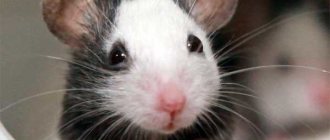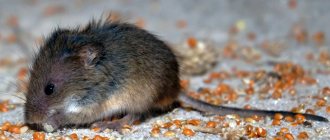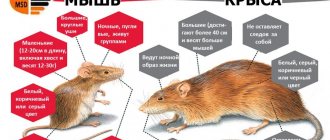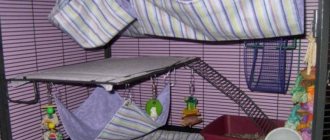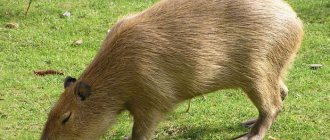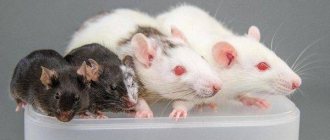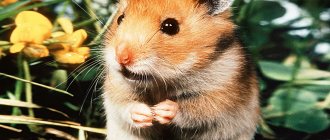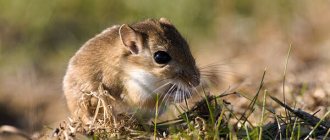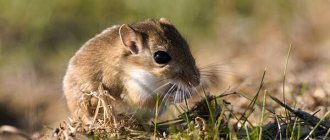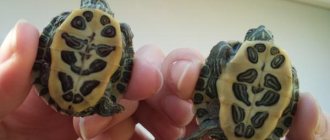The wood mouse (Aroietis uralensis) is a species of rodent in the family Muridae. Known as the dwarf mouse. Found in Armenia, Austria, Azerbaijan, Belarus, Bulgaria, China, Croatia, Czech Republic, Estonia, Georgia, Hungary, Kazakhstan, Latvia, Liechtenstein, Lithuania, Mongolia, Montenegro, Poland, Romania, Russian Federation, Serbia, Slovakia, Turkey, Ukraine .
It is about 90 mm long and is sometimes considered a pest.
What do they eat
These are, first of all, seed eaters of trees such as oak, beech, ash, linden, hawthorn, and plane tree. They eat young plants, weeds, buds, and moss. If there are a lot of seeds on the ground, they carry them into burrows for storage.
May eat small invertebrates such as snails, slugs , insects, arthropods, earthworms, caterpillars, centipedes, especially in late spring and early summer when plants are not available.
In the fall, they eat berries, fruits, mushrooms, roots, sweet corn, wheat, oats, and blackberries. In winter they can hunt bats.
Nutrition for domestic mice
Pets kept at home by rodent lovers should regularly receive a balanced diet, clean water, and treats. The diet must be supplemented with fresh vegetables and fruits, which are rich in vitamins and beneficial microelements. A varied diet will keep your pets healthy.
People who are just planning to get a mouse should know exactly what they eat. Animals happily eat peanuts and sweets: chocolates, cookies - but they can be given rarely, in small quantities. High sugar consumption causes obesity and dental problems.
Mice love to chew on objects to wear down their teeth, so the menu should be supplemented with acorns, carrots and other crunchy vegetables.
Favorite food: melons, apples, grapes. They enjoy eating greens, young shoots of raspberries, nettles, and bread. Zucchini, dried fruits, cucumbers, and cereals are no less attractive to rodents.
At home, mice eat sausage and quail eggs. If there are cockroaches in the house, the animals will prey on them. Some individuals eat raw meat, as well as their own smaller counterparts.
Ready-made feed
Store-bought mixtures will be the easiest option for keeping pets. There are special foods designed for mice.
When choosing a suitable product, you need to pay attention to the manufacturer and the ingredients included in the composition. Mixtures of foreign origin are considered the best.
Veterinarians do not recommend purchasing food that contains:
- a large number of herbal granules, oats;
- a lot of peanuts, cumin, sunflower seeds - they are good for animals, but in high doses they lead to excess weight gain;
- dyes.
Not the best option would be universal food, which is intended for all rodents. Still, each animal has its own nutritional needs, which must be taken into account by pet owners.
Behavior
Wood mice are active at night to avoid predation. Females may be more active during the day to collect sufficient food. While searching for food, noticeable objects such as leaves and branches are selected and distributed, which are used as landmarks during exploration.
Despite the name, they prefer hedges to forests. During the cold months, wood mice do not hibernate, but they can fall asleep and reduce physiological activity.
Females defend the nesting territory. The mouse squeals and emits ultrasonic signals during defense. Males emit ultrasound during copulation and until 24 days of age. Insensitive to red and infrared light, like badgers (they can be easily observed with a lamp covered in clear red plastic).
Learn more 10 Facts about the bite of vulture (alligator) turtles
What harm causes and methods of control
The wood mouse adapts very easily to various biological conditions and can colonize fields with grain crops.
They cause enormous damage to farms , destroying winter and spring crops of cultural and industrial plants over large areas, primarily rye, oats and wheat.
REFERENCE: As calculations have shown, if at the end of spring 6 pairs of mice live on arable land, then by the end of autumn, under favorable conditions for rodents, their number can reach 7-8 thousand.
They spoil agricultural crops at all stages of plant growth: they eat sown grain in the ground, gnaw out young shoots, and spoil the stems and leaves of plants.
But most of all, ripe grains of cultivated crops are destroyed. One wood mouse eats an amount of grain equal to its own weight per day.
By digging holes in the ground, they damage the root system of plants . In gardens and nurseries, mice gnaw out trunks, shoots and roots of fruit trees and shrubs, spoil and destroy ovaries, and eat ripe berries and fruits .
The problem is also that these rodents are able to spread and reproduce over a vast area of cropland in a short period of time.
Mice build a complex system of burrows with a large number of passages and several storage facilities in which they store grains of oats, wheat, rye and barley for the winter.
IMPORTANT! Wood mice are carriers of dangerous diseases such as hemorrhagic fever and leptospirosis. Fleas carried by mice can pose a very serious threat to pets.
Methods of controlling wood mice can be divided into two methods: preventive measures and direct destruction.
Preventive measures include installing various repellers and building protective barriers .
In small farms, this means laying out plants whose smell repels rodents: garlic and black root, and installing mechanical and electronic repellers.
To kill mice in a small area, their holes are filled with a special repellent solution .
But in the event of a mass invasion of rodents, radical measures must be taken. Destroying a mouse population is not an easy task; it requires an integrated approach.
For large farms with huge cultivated areas, it is necessary to contact special companies and organizations that carry out mass deratization .
Main methods of deratization:
- installation of ultrasonic repellers;
- installation of mousetraps with bait;
- glue-based traps;
- scattering of poisoned grain;
- pollination of centers of mass settlement of mice with pesticides.
To effectively exterminate rodents, all mice control measures must be used. Compliance with safety measures is also of great importance : measures to destroy mice should not harm the soil or human health.
IMPORTANT! Mice pose a major threat to harvested crops. Making their way to places where crops are stored, to warehouses with grain and flour, they destroy reserves, eating them and polluting them with waste from their vital activity.
Not only mice can cause significant damage to garden plots and vegetable gardens. We bring to your attention a series of materials about wild rats, shrews, bats, and moles. And also about insect pests: potato moths, bedbugs, Colorado beetles, chafers, mole crickets, ants, nematodes, spider mites, moths, locusts, slugs, armyworms, aphids, thrips and cicadas.
Life cycle, how long they live
The wood mouse has a breeding season from March to October, when many matings occur between individuals of different sexes, leading to competition and fighting.
The gestation period of wood mice is 25–26 days, the female gives birth to five cubs, naked and blind. The pups become independent in about three weeks, and ready to reproduce in two months.
Lifespan – 18 – 20 months. Mortality is very high in the spring among those who spent the winter. In juveniles it increases in spring and summer after mating fights.
Narrow skull
Appearance: The body is much larger than the small head, the ears are hidden in gray-brown fur. The color of the light patches of fur ranges from ocher to dark brown. The tail is long, body length is up to 125 mm.
Distribution: open areas of mountainous regions, alpine meadows, Kazakhstan, central Mongolia, Bashkiria, southern regions of northwestern China, western Urals, Amur, Tien Shan region.
Food: sedge, broad-leaved grasses, legumes, young shoots, bark of young trees.
Reproduction: up to five litters with 5-7 cubs.
Features: they are capable of independently searching for food on the 10th day of life; in preparation for winter, they make large reserves.
Possible harm to farmers: the vole can destroy grain fields for its own reserves and damage orchards.
Presence indicators
The droppings of a forest mouse are larger than those of a common mouse (3 – 5 mm). The animal holds the seeds between its front paws to gnaw and leaves them behind. You can find teeth marks on the edges of holes drilled into hazelnuts.
Eats the peel of rose hips, neglects the flesh. Opens snail shells at the base. Makes blanks under upside-down trunks, in cracks, holes, and old bird nests.
Fingerprints: Rarely visible. It has 4 toes on the front paws and 5 on the hind paws (more than the house mouse, vole ).
The pest is very agile. Can make large jumps if pursued (up to 80 cm). Can climb trees. The wood mouse suffers from environmental pollution, especially if it lives on the outskirts of roads.
Description and photo
These are medium sized mice. They are larger than the house mouse . Their body length is 7-10 cm , the tail is about the same length.
Her body weight ranges from 15 to 30 grams. The head is quite large in comparison with the body. She has a pointed muzzle with large eyes .
This type of mouse has very long ears , they can reach the eyes; with a body of 7-10 cm, the ears reach 2.2 cm.
The color is usually brown , but some individuals are yellow and even red. Young animals are dull in color, but over time their color becomes brighter.
Some individuals have a light spot on the chest. Such white spots are characteristic especially of individuals living in mountainous areas.
The peak behavior of wood mice is late evening, night and early morning . They do not hibernate in winter.
As mentioned above, there are many types of mice. You can find information about some of them on our website. Read all about the following: mole vole, yellow mole vole, steppe mole vole, voles: underground, dark, flat-skulled, narrow-skulled, Brazilian, red and red, housekeeper voles, gray vole and ground rat.
Protection of the forest dormouse
Photo: Animal forest dormouse
The forest dormouse species is listed in the Red Book of several regions of Russia - Kursk, Oryol, Tambov and Lipetsk regions. This variety of dormouse is protected by the Vienna Convention at the international level. Forest dormice are also included in the IUCN Red List as a species requiring constant monitoring and observation.
The main factors for the disappearance of these animals are:
- forestry activities, which every year increasingly destroy a huge number of forest dormouse refuges;
- sanitary felling and clearing of old broad-leaved forests;
- a significant reduction in the area of natural forest stands;
- poor development of undergrowth;
- bad harvest;
- reduction in the number of old hollow trees.
Oksky Nature Reserve in the Ryazan region, in Belarus, the Berezinsky, Voronezh and Khopersky protected areas protect forest dormouse habitats and identify new ones for their conservation, prohibiting all types of forestry activities. The All-Russian State Forest Reserve and the Kharkiv State Nature Reserve protect the species and take measures to preserve natural forest biocenoses.
Fans of this type of animal are not recommended to catch forest dormouse and bring it home. It is better to take the baby in specialized stores. The first purchase for an animal should be a large cage. You should not allow her to wander around the house willfully, otherwise the forest dormouse will definitely escape through the first crack that comes along.
Tags:
- Euarchontoglires
- Leithiinae
- Squirrel-like
- Deuterostomes
- Rodents
- Rodents
- Bilaterally symmetrical
- Animals of Afghanistan
- Animals of Belarus
- Animals of the mountains
- Animals of Greece
- Animals of Eurasia
- Animals of Iran
- Animals of the Caucasus
- Animals of China
- Animals of the Red Book
- Animals of the Red Book of Russia
- Animals of the forest
- Animals starting with the letter L
- Animals starting with the letter C
- Animals of the Volga region
- Animals of Poland
- Animals of Russia
- Animals
- Red Data Book of Ivanovo Region
- Red Book of the Kursk Region
- Red Data Book of the Lipetsk Region
- Red Book of the Oryol Region
- Red Data Book of the Pskov Region
- Red Data Book of the Tambov Region
- Forest dormouse
- Placental
- Vertebrates
- The smallest animals
- Dormouse
- Sony
- Forest dormouse
- Chordates
- Ghostostomes
- Quadrupeds
- Eukaryotes
- Eumetazoans
Economic importance
The yellow-throated mouse is a pest of agricultural land. It damages carrots and potatoes, watermelons and tomatoes, sunflowers, as well as grains both standing and in stacks. Cases have been recorded when in some areas in central Russia it was necessary to abandon oak planting in the fall, because these rodents destroyed the sown acorns.
This species is a carrier of many serious diseases. One of the most dangerous is tick-borne encephalitis. In 1992, scientists established that the yellow-throated mouse is a carrier of the Dobrava-Belgrade cantavirus, which causes a serious disease - hemorrhagic fever, complicated by renal syndrome.
